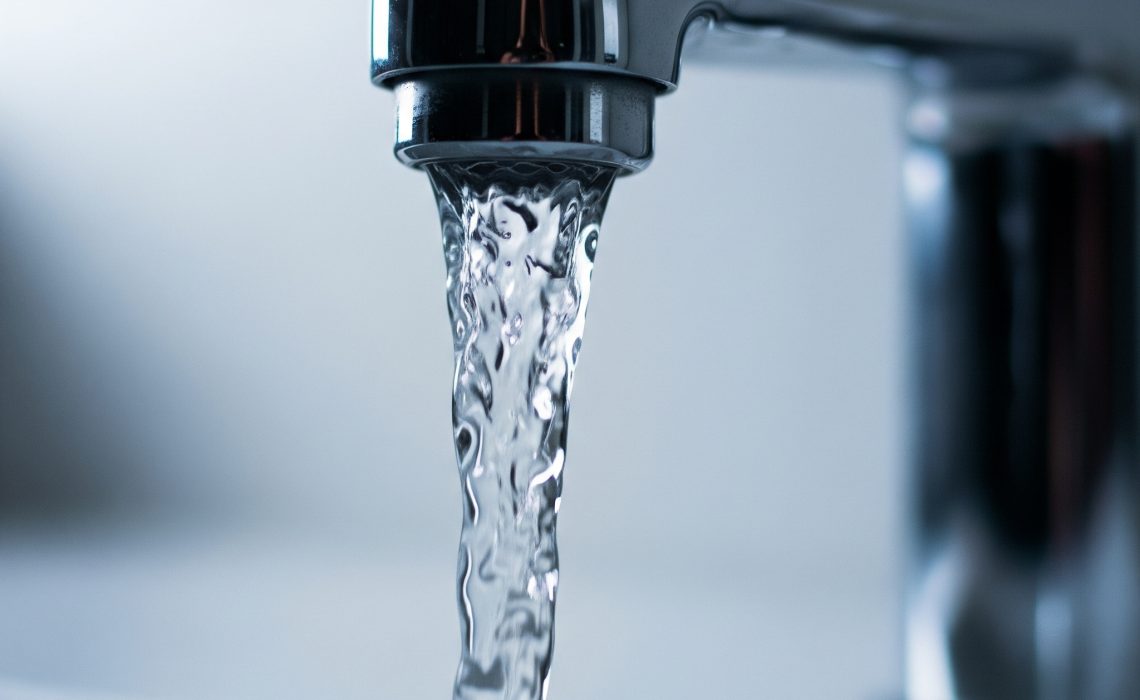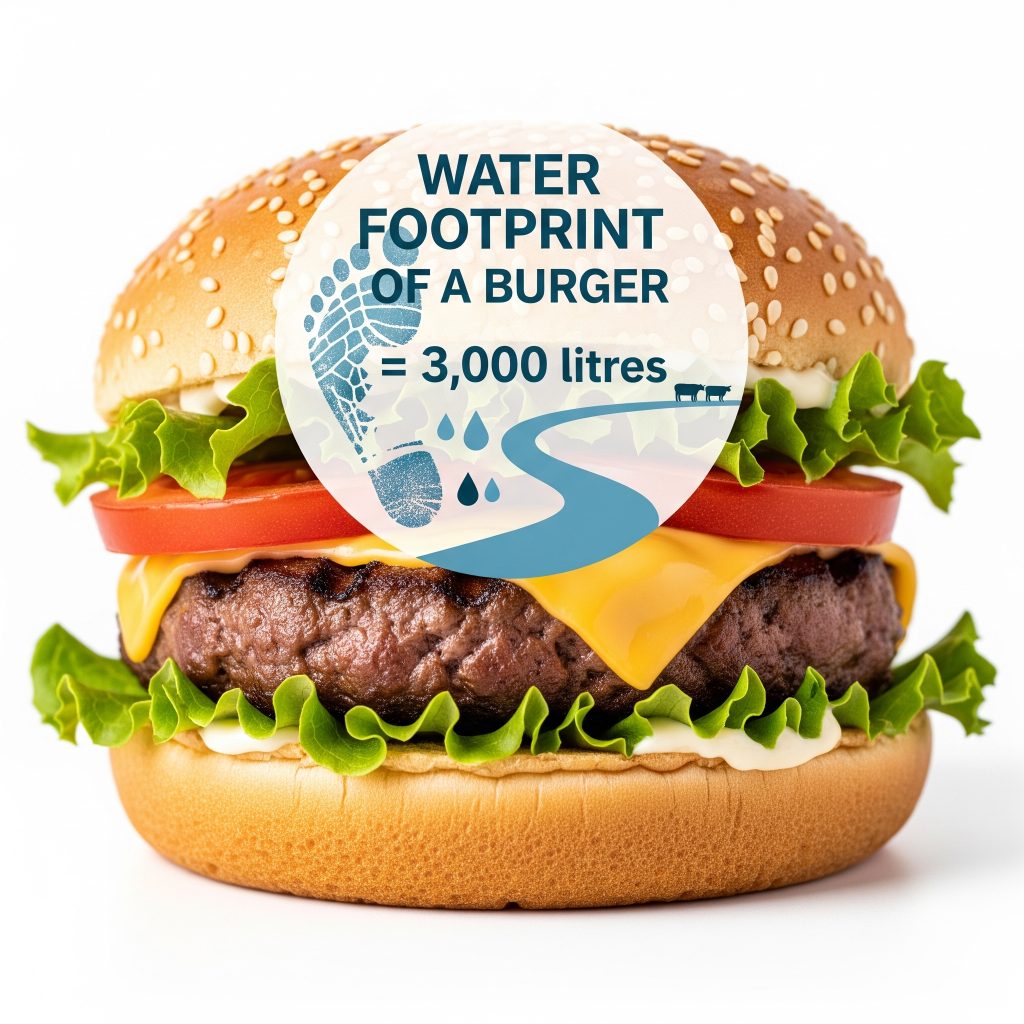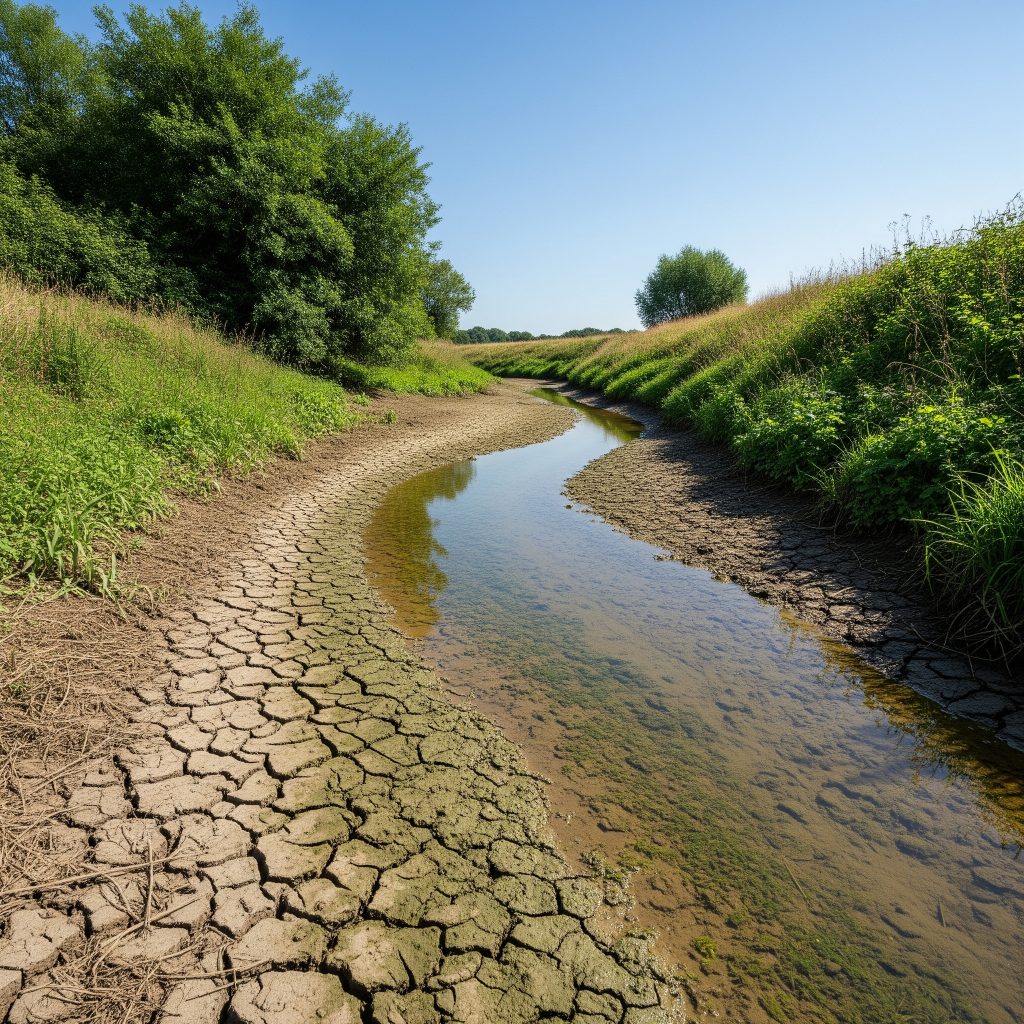
If you’re anything like me, you probably thought you had a handle on your household water usage. Prepare to have your mind blown! That’s how I felt when we kicked off our nearly last Transition Streets module about water.
We all know about the obvious ways we use water at home – showers, toilets, washing up and laundry. But did you know that your personal “water footprint” is likely far greater than the 150 litres per person per day we typically use in our homes? According to the module notes, the average water footprint is a staggering 3,400 litres per day! Here’s why….
More Than Just a Dripping Tap: Your Hidden Water Footprint
This isn’t about how much you drink or how long your shower is. This colossal figure accounts for the “embedded water” in the products we consume. Think about it:

- A single burger: The equivalent of 3,000 litres of water. Yes, you read that right. Much of this is down to the intensive farming practices required to produce beef.
- A pair of jeans: A whopping 8,000 litres. The dyeing and finishing processes in textile manufacturing are incredibly water-intensive.
- A smartphone: An unbelievable 13,000 litres! From mining the raw materials to manufacturing the components, the journey of your phone guzzles water.
It really puts into perspective how our consumption habits, far beyond our immediate household use, have a massive impact on global water resources. This is why thinking about buying second-hand, reusing, and reducing our overall consumption is so vital.
Contemplating a purchase right now, I wonder what the water footprint is on a new Air-fryer compared to a re-conditioned one??
Hertfordshire: One of the Driest Counties in the Country
… and yet on average we are amongst the highest consumers of water in the UK. Maybe we water our gardens more because of this? Not sure but on average we use 157 litres per person per day, so not too much above the norm but when you add it up of course, it matters a LOT!. According to google there are 1,214,500 people living in this county, do the maths and we are looking at 8,507 litres per day over an above the average… I daren’t calculate how much a year that is!

But there is something else important about Hertfordshire related to water consumption. Our chalk streams such as the Chess, Lea and the Mimram to name just three of the fourteen. They are true gems, boasting crystal-clear waters that bubble up from the underlying chalk aquifer, supporting a unique and diverse array of wildlife rarely found elsewhere. These precious ecosystems are not only vital for biodiversity, providing habitats for species like water voles and brown trout, but also serve as a crucial source of clean drinking water for local communities. In fact there are only about 260 of these worldwide. Their importance is particularly highlighted in modules like Transition Streets Water, which emphasise sustainable resource management.
However, these delicate rivers are increasingly threatened by the effects of climate change. Extended periods of low rainfall and higher temperatures lead to reduced groundwater levels, causing the streams to dry up, often for long stretches. This directly impacts the delicate flora and fauna, disrupts water supplies, and underscores the urgent need for water conservation and climate action to protect these invaluable and irreplaceable natural assets for future generations
Where Does Your Household Water Go? Prepare for Some Surprises!
We had the facts and figures to share in our group that broke down average household water usage by activity, and some of the statistics were truly eye-opening:
- Showers and Baths: A massive 31% of your in-home water use.
- Toilet Flushing: A surprising 23%! That’s almost a quarter of your water just going down the loo.
- Washing Up (Dishwashers & Handwashing): 12%. Modern dishwashers are surprisingly efficient, using around 10 litres per load – often less than handwashing!
- Taps (general use): 11%.
- Clothes Washing: A surprisingly low 8%. Modern washing machines are far more economical than older models.
- Outside (garden, car washing, etc.): Just 4%.
- Drinking: 2% only
So, nearly 60% of our household water is simply for washing ourselves and flushing the toilet!

Fuelling a Greener Future, One Story at a Time. Every small step we take – from reusable bags to conscious consumption – ripples outwards, creating a wave of hope. Let’s rewrite the story of our planet, one click at a time. I believe in the power of storytelling. By sharing inspiring environmental initiatives, unsung sustainability heroes and practical tips, I aim to amplify the voices making a difference. Imagine a world where everyone is empowered to take action, one small change at a time. ‘Buy Me A Coffee’ donation is a quick and easy way to offer a small, one-off donation, that helps keep this platform running and allows me to continue sharing these vital stories. Just click the “Donate” button (top right corner). Every contribution, no matter the size, makes a difference. Thank you for being a part of this journey.
Tackling the Big Two: Showers and Toilets
Showers: The average shower time is apparently seven minutes, but the recommendation is to aim for four. Yes, fourminutes! This might sound impossible, but it’s about being more mindful. Some clever people even turn the water off while they lather up, a practice common in water-scarce regions. And for those of us with older, less efficient showerheads, considering a low-flow option could make a significant difference.
Toilets: Here’s a shocker – toilets installed before 2001 can use up to 14 litres per flush! If you have an older loo, consider using a displacement device (like a brick in the cistern, or those handy free bags from water companies) to reduce the water per flush. And, of course, the “if it’s yellow, let it mellow” mantra (or “peed twice, flush once”) can also cut down on flushes. It might sound a bit quirky, but every drop counts!
Beyond the Obvious: Little Things That Make a Big Difference
- Dishwashers vs. Handwashing: Modern dishwashers are often more efficient than handwashing, especially if you run them only when full. If you handwash, consider using a washing-up bowl to collect the water and then use it on your garden (if you use eco-friendly washing-up liquid!).
- Condenser Tumble Dryers: The water collected in the condenser can be used for watering plants or even in your iron – it’s just pure water! Though microplastics are potentially an issue here, depending on whether what you put in your dryer is a natural fabric – cotton for example – or synthetic. Read the next point for a potential solution for microplastics…
- Microplastics and Washing: Did you know that synthetic clothing releases microplastics into the water during washing? Products like “guppy bags” can help trap these tiny fibres, preventing them from entering our waterways.
Water: Our Most Precious Resource
This deep dive into water usage truly highlighted for us the urgent need for a more conscious approach to this vital resource. While we might think of water as abundant in places like the UK, areas like Hertfordshire are actually among the driest counties and I am sure we are not alone.
Furthermore, the state of our water infrastructure and the shocking amount of sewage discharged into rivers are stark reminders of the challenges we face. Industries, farming practices, and our insatiable demand for cheap fashion are all contributing to the pollution and depletion of our water sources.
Ultimately, the Transition Streets Water module wasn’t just about turning off the tap. It was about understanding the far-reaching impact of our daily choices and recognising that every decision, from what we buy to how we wash, plays a role in protecting this irreplaceable resource. Let’s all commit to being more mindful water users – for our planet, and for future generations
